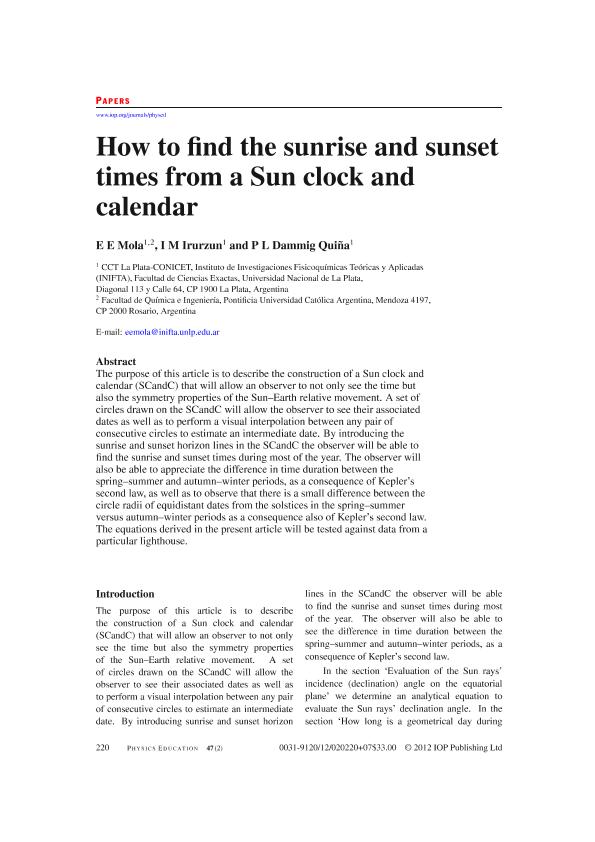Artículo
How to find the sunrise and sunset times from a Sun clock and calendar
Fecha de publicación:
03/2012
Editorial:
IOP Publishing Ltd
Revista:
Physics Education
ISSN:
0031-9120
Idioma:
Inglés
Tipo de recurso:
Artículo publicado
Clasificación temática:
Resumen
The purpose of this article is to describe the construction of a Sun Clock and Calendar (SCandC) that will allow an Observer of it not only to know the time but also the simmetry properties of the Sun-Earth relative movement. A set of circles drawn on the SCandC will allow the Observer to know their associated dates as well as to perform a visual interpolation between any pair of consecutive circles to estimate an intermediate date. By introducing the Sunrise and Sunset Horizon Lines in the SCandC the Observer will be able to know the Sunrise and Sunset times during most of the year. The Observer will also be able to appreciate the difference in time duration between the Spring -Summer and Autumn - Winter periods, as a consequence of Kepler´s Second Law as well as to observe that there is a small difference between the circle radius of equidistant dates from the solstices in the Spring- Summer vs Autumn-Winter periods as a consequence also of Kepler´s Second Law The equations derived in the present article will be tested against data from a particular Lighthouse.
Palabras clave:
Sun Clock
,
Sun-Earth Relative Movement
,
Sunrise
,
Sunset
Archivos asociados
Licencia
Identificadores
Colecciones
Articulos(INIFTA)
Articulos de INST.DE INV.FISICOQUIMICAS TEORICAS Y APLIC.
Articulos de INST.DE INV.FISICOQUIMICAS TEORICAS Y APLIC.
Citación
Mola, Eduardo Elías; Irurzun, Isabel Maria; Dammig Quiña, Pablo Leandro; How to find the sunrise and sunset times from a Sun clock and calendar; IOP Publishing Ltd; Physics Education; 47; 2; 3-2012; 220-226
Compartir
Altmétricas




